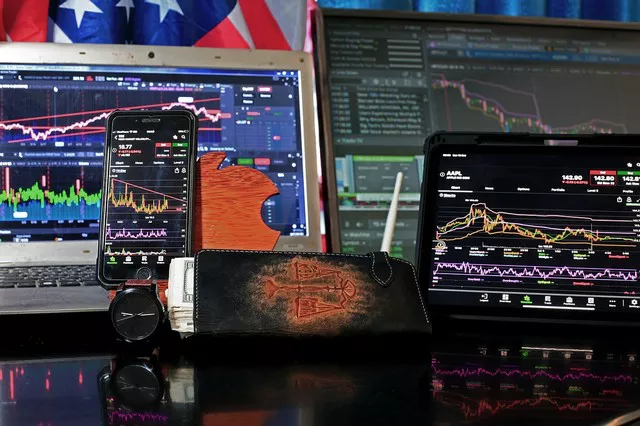The world of financial markets offers a myriad of opportunities for traders and investors. Among these, trading S&P Futures stands out as a prominent endeavor. The S&P Futures, tied to the S&P 500 Index, provide a platform for speculating on the future direction of the stock market.
Understanding S&P Futures
S&P Futures, short for Standard & Poor’s Futures, are contracts that allow traders to speculate on the future price movements of the S&P 500 Index, which represents the performance of 500 major U.S. publicly traded companies. These futures contracts offer exposure to the broader equity market and can be used for hedging, speculation, or portfolio diversification.
1. The Role of Futures Contracts
Futures contracts are financial instruments that enable traders to take a position on the future value of an underlying asset. In the case of S&P Futures, the underlying asset is the S&P 500 Index. Traders can profit from both upward and downward movements in the index.
2. Leveraged Exposure
S&P Futures allow traders to gain leveraged exposure to the S&P 500 Index without having to invest the full value of the underlying assets. This leverage can amplify both gains and losses, making risk management a crucial aspect of trading.
Accessing S&P Futures Markets
Accessing S&P Futures markets is facilitated by various trading platforms and brokerage firms. These platforms provide traders with real-time data, tools, and resources to engage in S&P Futures trading.
1. Online Brokerage Platforms
Online brokerage platforms, such as TD Ameritrade, E*TRADE, and Interactive Brokers, offer traders access to S&P Futures markets. These platforms provide customizable trading interfaces, real-time data, research tools, and risk management features.
2. Futures Trading Platforms
Specialized futures trading platforms, such as NinjaTrader and Tradovate, focus exclusively on futures trading. These platforms often offer advanced charting, technical analysis tools, and direct access to futures exchanges.
3. Full-Service Brokerages
Full-service brokerages provide traders with personalized support and guidance. While they may have higher commission fees, they can be valuable for those seeking expert advice in futures trading.
Developing a S&P Futures Trading Strategy
Formulating a trading strategy is fundamental to success in S&P Futures trading. A well-defined strategy helps traders make informed decisions and manage risk effectively.
1. Technical Analysis
Technical analysis involves studying price charts, patterns, and indicators to predict future price movements. Traders use tools like moving averages, RSI (Relative Strength Index), and MACD (Moving Average Convergence Divergence) to identify potential entry and exit points.
2. Fundamental Analysis
Fundamental analysis involves evaluating macroeconomic indicators, company earnings, and other factors that impact the market. For S&P Futures trading, staying informed about economic data releases and corporate earnings reports is crucial.
3. Risk Management
Effective risk management is paramount in S&P Futures trading due to the inherent leverage. Traders should determine their risk tolerance, set stop-loss orders, and avoid overleveraging to prevent significant losses.
4. Diversification
Diversifying trading strategies and avoiding overconcentration in a single position is essential. Traders can explore various trading techniques, such as day trading, swing trading, and trend following, to diversify their approach.
5. Trading Plan
Creating a trading plan that outlines entry and exit criteria, risk management strategies, and a clear trading schedule can help traders stay disciplined and organized.
Executing S&P Futures Trades
Executing trades in S&P Futures requires familiarity with order types, market dynamics, and trading mechanics.
1. Order Types
Common order types in futures trading include market orders, limit orders, stop orders, and stop-limit orders. Understanding when and how to use these order types is vital for executing trades efficiently.
2. Market Dynamics
S&P Futures markets are open almost 24 hours a day, five days a week. Understanding market hours, liquidity, and trading volume patterns can help traders choose optimal trading times.
3. Margin and Initial Margin Requirement
Margin is the collateral required to enter a futures trade. The initial margin requirement varies based on the contract and the brokerage. Traders should be aware of margin requirements and the potential for margin calls.
4. Roll Over Contracts
S&P Futures contracts have expiration dates. Traders who wish to maintain their positions beyond the expiration date need to roll over their contracts to the next expiration period.
Conclusion
Trading S&P Futures offers traders exposure to the dynamics of the broader equity market and the opportunity to profit from both upward and downward price movements. By understanding the intricacies of S&P Futures contracts, utilizing effective trading strategies, and mastering the mechanics of execution, traders can navigate the complexities of the futures market with confidence. However, it’s essential to recognize that futures trading carries inherent risks due to leverage, and traders should approach it with careful planning, discipline, and a commitment to ongoing education.


